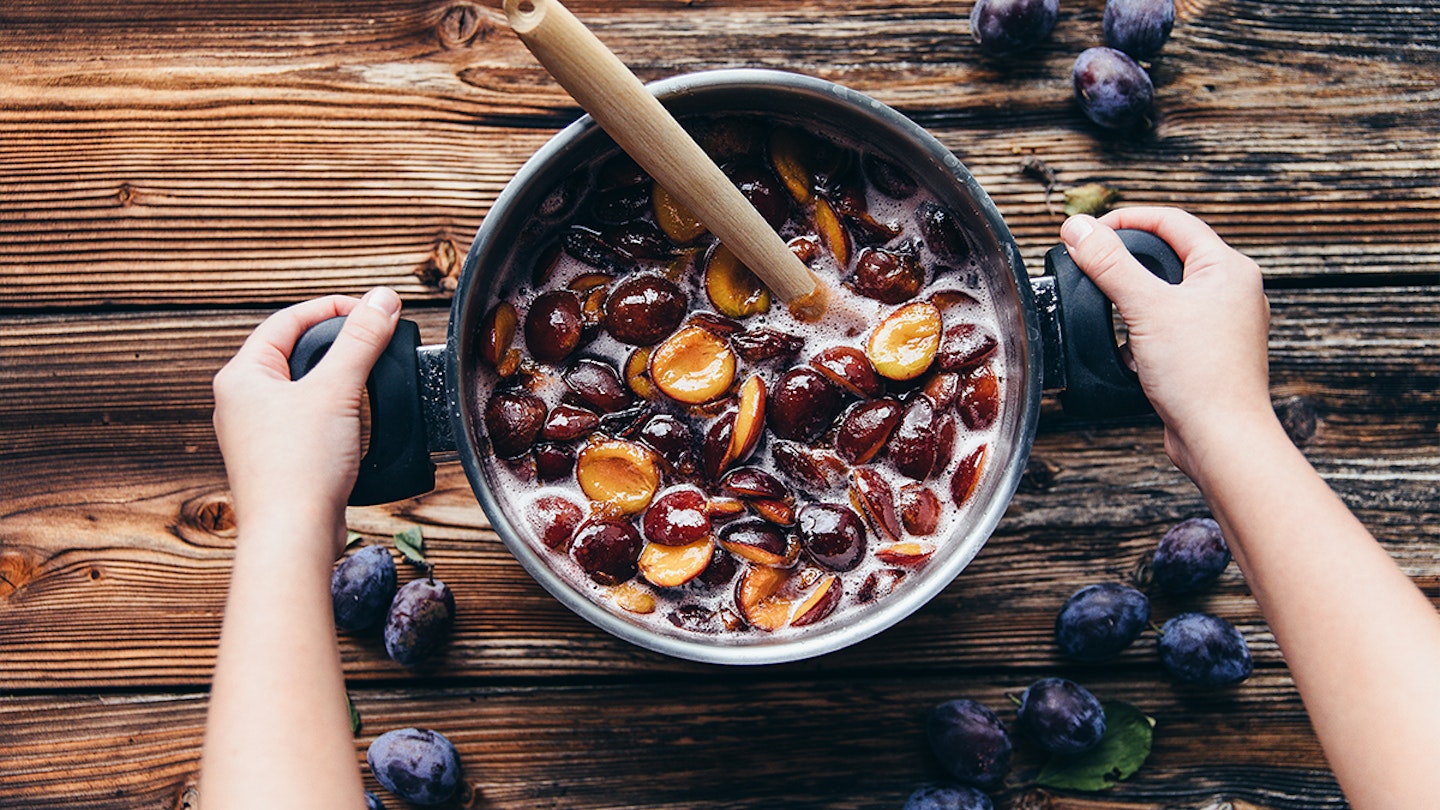Plums are in season between the end of August to early October, making them the perfect autumnal jam. However, you can make plum jam all year from scratch.
This recipe explains how to make plum jam without pectin. It's a great way to use up extra or overripe plums you have at home.
Plum jam recipe
What you'll need
-
A knife
-
A large wide heavy-based pot
-
A long-handled wooden spoon
-
A slotted spoon
-
8 x 450g prepared jam jars
-
1 x pack Safewrap Jam Pot Covers (optional)
Ingredients
-
2kg English plums, washed, halved and stoned
-
600ml cold water
-
2 x 1kg bags Tate & Lyle Jam Sugar or you can use regular sugar (see notes)
Method
-
Cut the plums and put the plums and water in the pan. Bring to the boil then reduce the heat, simmer uncovered, stirring occasionally with the wooden spoon for 45 minutes or until the plums are soft and pulpy and the liquid is reduced by about half.
-
Add the sugar, stirring until it has completely dissolved. When the sugar has dissolved, the base of the pan will no longer feel gritty when stirred with the wooden spoon. Bring to the boil and boil rapidly for 4-5 minutes.
-
Remove from the heat and test for the setting point by spooning a little jam onto one of the chilled saucers. Cool for a few seconds, then push the jam with your finger. If it wrinkles on the surface, it has reached setting point and is ready to put into the jars. If not, boil a further 2 minutes, then test again.
-
Skim off the scum from the surface using a slotted spoon. Leave to stand for 15 minutes, then stir thoroughly. Then the jam is ready! Set the prepared jars on a wooden board, fill the jug with jam and pour into warm jars right to the top. Cover the jam with a waxed disc and a jam pot cover. Secure with an elastic band and label or mark on the jar with a waterproof pen.
Recipe from Waitrose
Notes
Make sure to sterilise your jars. See how to sterilise your jars in our article onhow to make jam here.
To halve the plums, cut along the indentation in the flesh, twist the halves apart and remove the stones with the tip of a sharp knife
To successfully make jam you must weigh the fruit and sugar carefully. By using jam sugar that contains pectin, which is a natural setting agent it will allow the jam to set easily. Plums are high in pectin, so it is possible to use regular sugar too.
The trick is to choose really ripe or slightly bruised one’s plums. Don’t be wary of the plums that you would usually bin. The additional sugar overripe plums are perfect for jam-making. It’s a great way to reduce food waste too!
If you macerate the plums overnight by mixing them in a bowl with some sugar and placing them in the fridge (or for up to 24 hours) this makes the plum flesh softer. This means you will have a smoother plum jam as the fruits will cook faster.
Here is a video on how to make spiced plum jam if you are looking for a recipe with a more unique flavour.
When are plums in season?
In the UK, plums are in season from August to early October.
When are plums ready to eat?
Plums are ready to eat when they feel slightly soft if you give them a gentle squeeze.
Are plums high in pectin?
Plums are naturally high in pectin, so it's fine to make plum jam with no added pectin.
Do you peel plums when making jam?
You should peel plums and nectarines as their skins can leave a chewy texture in the jam. If you want to leave the skins on, a good idea is to run the fruit through a blender or food processor to chop them up.
How do you get the bitterness out of a plum jam?
If you add a little honey or brown sugar it can soften up the bitter edge of citrus fruits.
